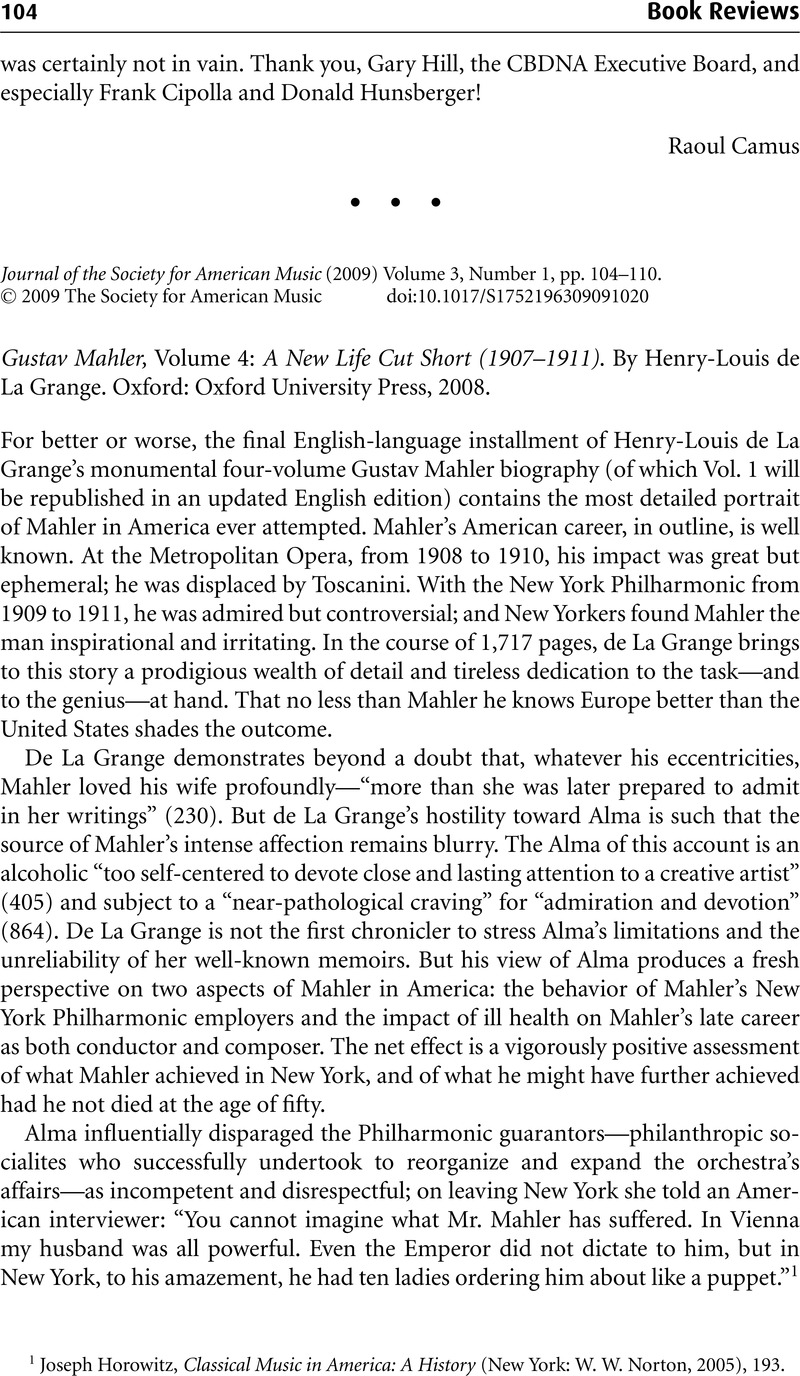No CrossRef data available.
Published online by Cambridge University Press: 15 January 2009

1 Horowitz, Joseph, Classical Music in America: A History (New York: W. W. Norton, 2005), 193Google Scholar.
2 Ibid., 186.
3 Ibid., 188–89; a shorter extract appears in de La Grange, A New Life Cut Short, 1,047.
4 This is a central theme of my Wagner Nights: An American History (Berkeley: University of California Press, 1994).
5 David Paul, “European Émigrés and the American Reception of Gustav Mahler,” paper read at the 2008 annual meeting of the Society for American Music.
6 On Higginson, see Horowitz, Classical Music in America, 43–63, 71–80, 90–93.
7 De La Grange vigorously contests my own high opinion of Krehbiel in Wagner Nights and Classical Music in America and considers my account of Mahler's American career, in Classical Music in America, marred by “lack of objectivity,” “unverified opinions,” and “time-worn clichés.” He also cites two ostensible factual errors: “[Horowitz] mentions James Gibbons Huneker as one of the members of New York's ‘superb critical community’ but Huneker never reviewed any of Mahler's Philharmonic concerts. . . . Vienna did not give Mahler a hero's funeral: he had insisted on a private funeral, without speeches or music” (1,201). In fact, Huneker (who more typically wrote articles than reviews) was indeed part of New York's critical community during the Mahler years. Although it is true that Mahler insisted on a private funeral, the area outside the Grinzing funeral chapel was densely thronged with mourners, and so was the route of the cortege; I would call that outpouring a “hero's funeral.” Elsewhere, de La Grange generously acknowledges my chronicle of Seidl's New York career in Wagner Nights, for which I thank him.
8 Arthur Farwell, another New York critic de La Grange furiously disparages, was, like Krehbiel, a collector of folk and indigenous music; as a composer, his Bartókian Navajo War Dance No. 2 (1905) helps to contextualize his critiques of Mahler's symphonies.
9 Like Higginson, Langford afforded observers such as Krehbiel (who lectured for the Seidl Society, with Seidl himself offering musical examples at the piano) and Henderson (who was her brother-in-law) a counterexample to Mary Sheldon; Langford's dealings with Seidl, preserved in detailed correspondence, were notably affectionate, harmonious, and efficient. See Horowitz, Wagner Nights, 236–39.
10 Among Fried's recordings is the first ever made of Mahler's Resurrection Symphony—a potent 1924 reading that transcends historic interest.